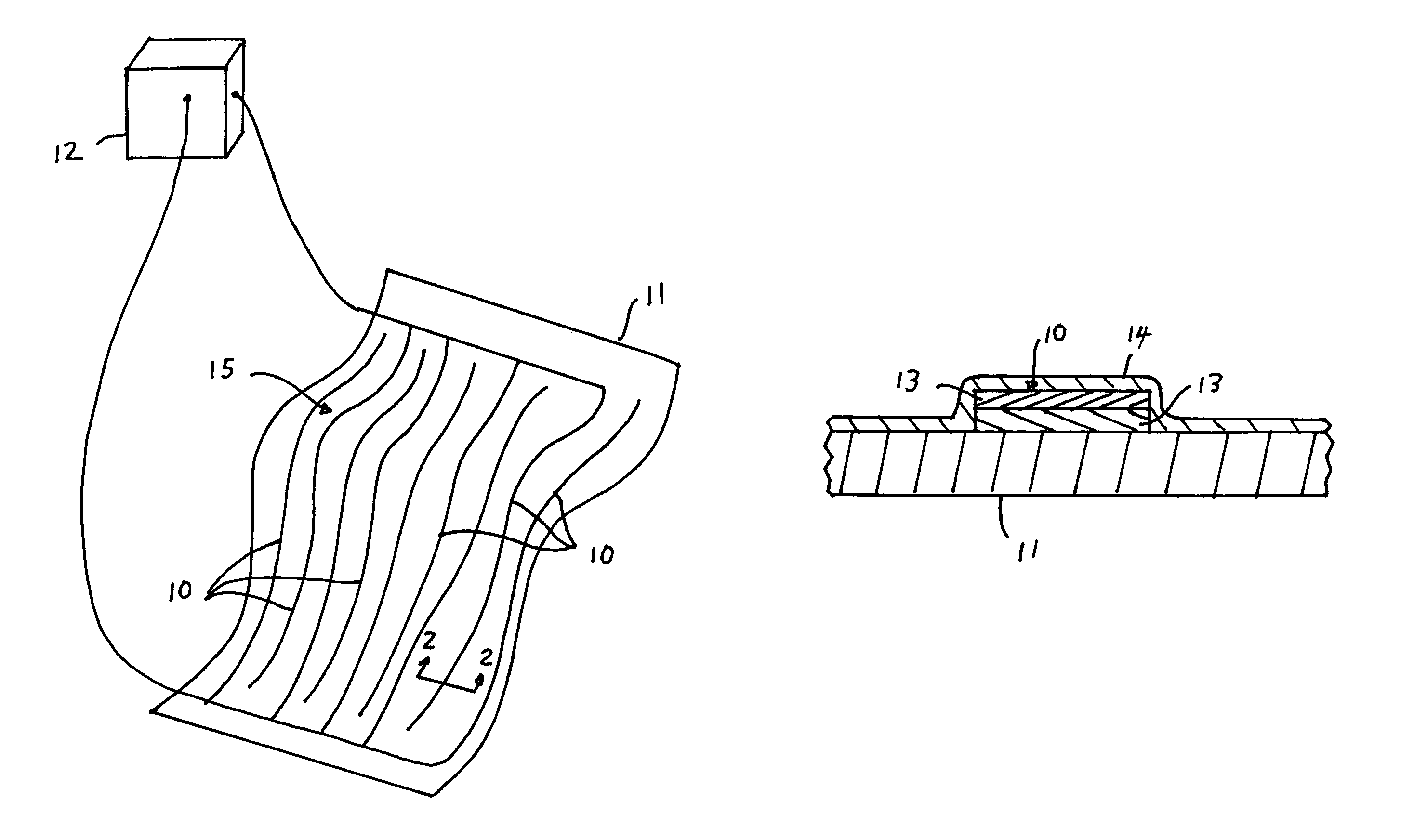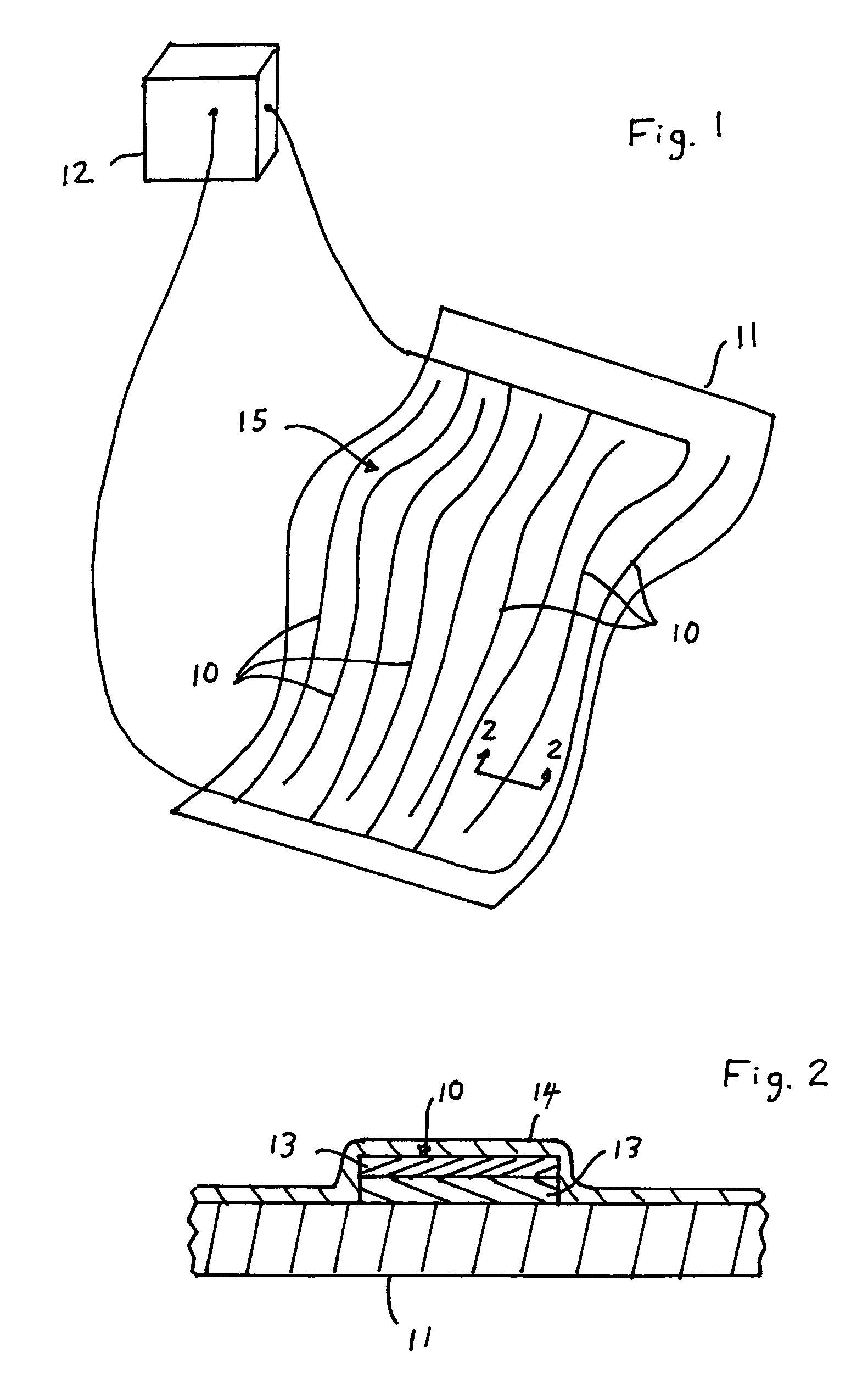Electrodynamic arrays having nanomaterial electrodes
a nanomaterial and electrode technology, applied in the field of electrodynamic arrays, can solve the problems of limited flexibility of materials, material brittleness, and limited application of fabrics or similar materials, and achieve the effect of quick and easy production
- Summary
- Abstract
- Description
- Claims
- Application Information
AI Technical Summary
Benefits of technology
Problems solved by technology
Method used
Image
Examples
Embodiment Construction
[0021]With reference to FIGS. 1 and 2, the preferred embodiments of the present invention may be described.
[0022]The present invention deposits liquid solutions (also referred to herein as “inks”) of a liquid carrier containing nanomaterials on any of various substrates 11, both rigid and flexible, as electrodynamic arrays 15 of conductive electrodes 10 forming electrodynamic patterns for the movement and separation of materials. The substrates 11 may include polymeric substrates, optical devices, aircraft components, windshields and the like. Flexible substrates may include fabrics. The present invention may also be applied to both transparent and opaque substrates. Specific substrates may include, without limitation, clothing, optical devices such as windows, lenses, windshields and other metallic or non-metallic devices.
[0023]The liquid solution of nanomaterials can be deposited on the substrate 11 using various deposition methods that include, without limitation, printing, elect...
PUM
| Property | Measurement | Unit |
|---|---|---|
| width | aaaaa | aaaaa |
| power | aaaaa | aaaaa |
| flexible | aaaaa | aaaaa |
Abstract
Description
Claims
Application Information
 Login to View More
Login to View More - R&D
- Intellectual Property
- Life Sciences
- Materials
- Tech Scout
- Unparalleled Data Quality
- Higher Quality Content
- 60% Fewer Hallucinations
Browse by: Latest US Patents, China's latest patents, Technical Efficacy Thesaurus, Application Domain, Technology Topic, Popular Technical Reports.
© 2025 PatSnap. All rights reserved.Legal|Privacy policy|Modern Slavery Act Transparency Statement|Sitemap|About US| Contact US: help@patsnap.com


